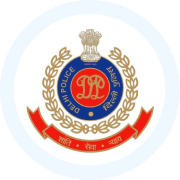Princely States in India - Delhi Police Constable PDF Download
The Era of Princely States in India
Before India achieved independence, there existed a total of 565 princely states, each enjoying a unique recognition from the British Raj. Though not technically a part of British India, these kingdoms were staunch allies of the British Empire, helping maintain control over rival colonial powers and Indian nationalist movements.
The Road to Independence
With the announcement of India's independence, the British declared that the princely states would no longer be under British administration. This implied that each of the 565 states would gain legal independence. The Indian Independence Act of 1947 established India and Pakistan as separate dominions, offering the princely states three options: join India, join Pakistan, or remain independent.
The Architect of Integration: Sardar Vallabh Bhai Patel
The enormous task of merging the princely realms into India fell upon Sardar Vallabh Bhai Patel, India's first Deputy Prime Minister and Home Minister. Working in collaboration with V.P. Menon, the Secretary of the Ministry of the States, Patel formulated a strategy to convince the monarchs to join India. He appealed to their sense of patriotism and emphasized the potential consequences of anarchy if they chose otherwise.
The Instrument of Accession
The official agreement that bound the princely states to India was known as the "Instrument of Accession." Both India and Pakistan, along with the respective princely states, had to sign this document. According to the treaty, the Government of India would handle foreign affairs, defense, and communications, while the states would have autonomy over all other domestic affairs.
Stories of Integration: Princely States Unite with India
- Jodhpur: The King of Jodhpur's alliance with India was facilitated through the efforts of the Diwan of Bikaner, leading to the signing of the Instrument of Accession.
- Bhopal: The Nawab of Bhopal faced opposition when Lord Mountbatten attempted to prevent the territory from joining India. However, the citizens of Bhopal saw through this and signed the Instrument of Accession.
- Travancore: Despite initial resistance from the Dewan of Travancore, C.P. Ramaswami Iyer, the King of Travancore eventually joined India after persuasion from Jawaharlal Nehru.
- Junagarh: An intense situation arose in Junagarh, where a Muslim ruler led a Hindu-majority princely state. India organized a plebiscite and ultimately integrated Junagarh into the country.
- Hyderabad: The Nawab of Hyderabad's attempts to resist integration were met with opposition from the Telangana insurrection and peasant movements. Eventually, Hyderabad surrendered to India.
- Kashmir: Maharaja Hari Singh sought India's assistance during a Pakistan-backed attack on Kashmir. The Instrument of Accession was signed, leading to the involvement of the Indian Army.
The Legacy of Integration
- Sardar Vallabhbhai Patel played a crucial role in bringing 562 princely kingdoms into India's fold. Before the 1947 Partition of India, there were around 584 princely states known as "native states," which were not fully under British India's jurisdiction.
- Upon gaining independence, these states had the choice to join India, Pakistan, or remain independent. Through his diplomatic expertise and tact, Sardar Vallabhbhai Patel successfully integrated a significant number of these princely kingdoms into the Union of India.















